DZone Kubernetes in the Enterprise Survey Highlights Trends | D2iQ
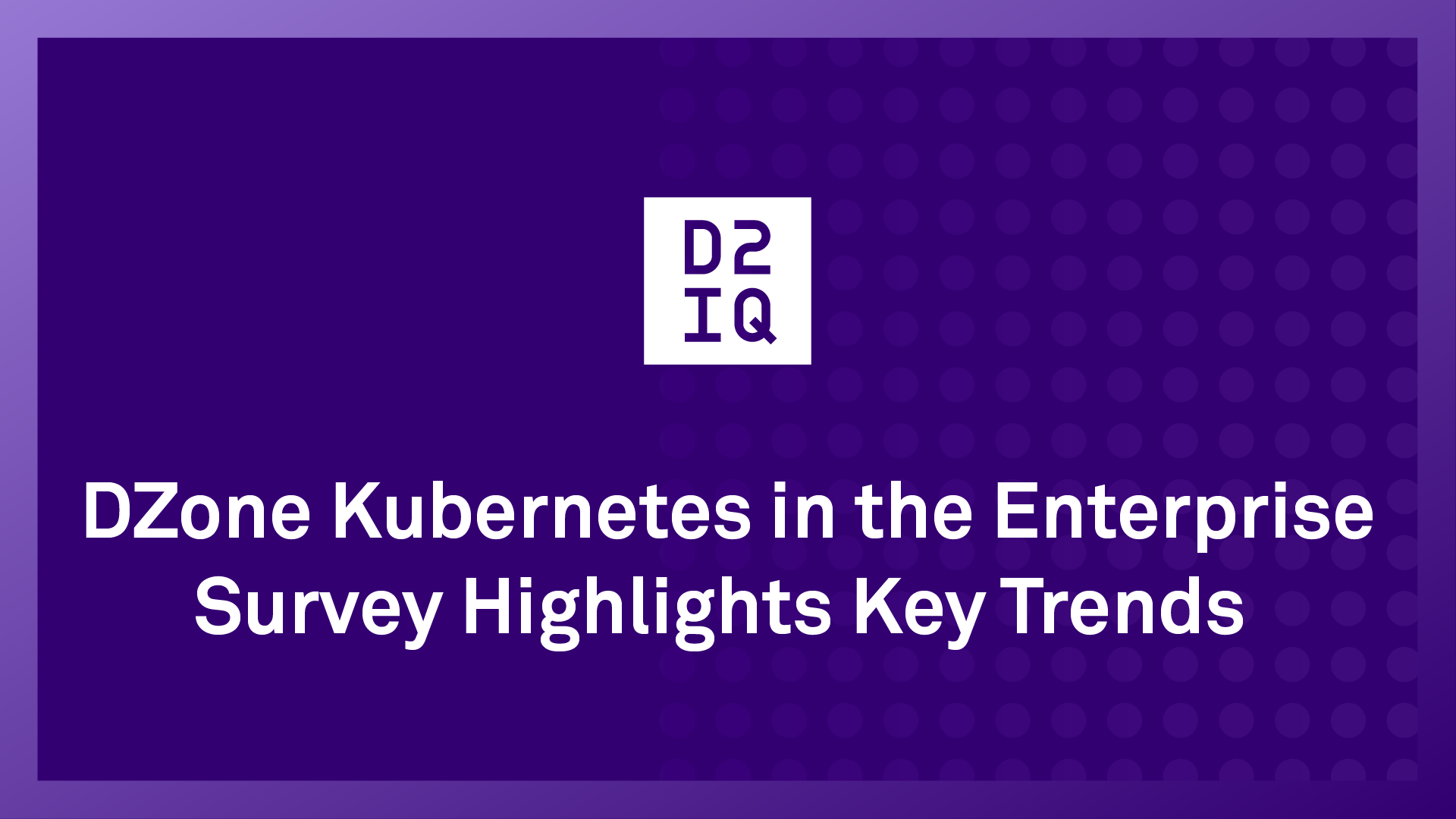
10 min read
To keep pace with the accelerating digital landscape, today’s organizations are adopting containers and Kubernetes to enable agility and increased time-to-value. Given Kubernetes widespread adoption, it’s no surprise there are so many new and emerging trends and best practices.
In August 2022, DZone surveyed a global audience of software developers, architects, and other IT professionals across a number of verticals to understand how they were using Kubernetes in their organizations and what trends were shaping the IT landscape in 2022 and beyond.
Building on findings from previous years, DZone’s 2022 Kubernetes in the Enterprise Trend Report looks more deeply into the growing ecosystem and tooling, use cases, and advanced strategies for Kubernetes adoption in the enterprise.
Following are the key takeaways from the report, which can be applied to your Kubernetes strategy and deployment.
Container Usage Slightly Increases Within Large Organizations
DZone’s research found that although container adoption remains consistent with the numbers from the last couple of years – at or around the 90% mark – container usage increases with organization size. Respondents from larger companies have slightly increased their container usage from 2021 to 2022, moving from 88.2% to 92.9%.
Conversely, containers are becoming less popular over time for smaller companies. According to the report, this drop-off could simply be an indication that smaller companies are turning to “micro-VM” serverless technologies rather than spinning up new containers.

Figure 1
In terms of managing containers, most respondents use Docker in development (19.5%), then switch to Kubernetes in production (17.0%). “The Big Three” cloud providers (Google, Amazon, Azure) have continued their relative rankings since 2016, with AWS maintaining its market dominance.
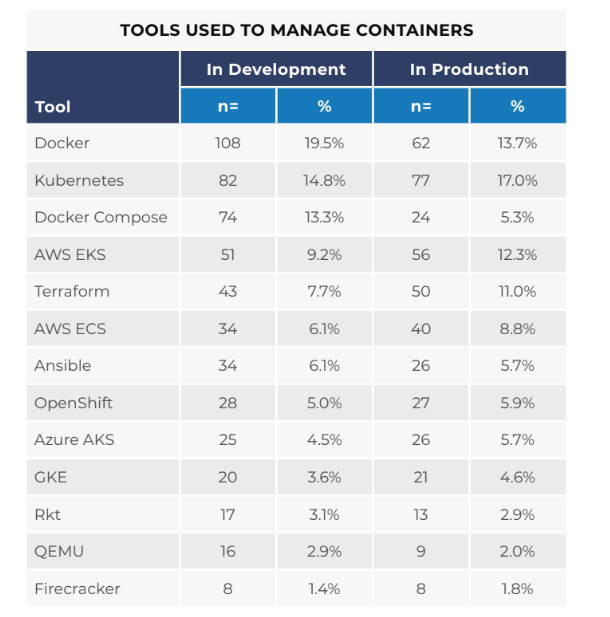
Complexity of Kubernetes Leads to Stagnant Adoption
Although Kubernetes is maturing rapidly, organizations continue to run into challenges. The most prevalent challenges point to a leveling off in the growth of Kubernetes adoption. Based on last year’s flattening trend of Kubernetes adoption, DZone expected to see a number that was mostly the same – although given that smaller companies might be moving away from spinning up new containers, they predicted a slight year-over-year dip.
This hypothesis was spot on, with Kubernetes use stalling and hovering in the mid-70% range. When the data was broken into smaller and larger companies, the same trend was seen. Of the responses, 85.5% of participants from larger companies said they ran Kubernetes clusters, whereas only 63.4% of respondents from smaller companies said they did so.
Historically, a chief complaint about using Kubernetes has been its complexity. Although container-related tooling has improved over time, it’s reasonable to assume that companies with fewer people and resources won’t put as much effort into Kubernetes adoption as will larger enterprises.
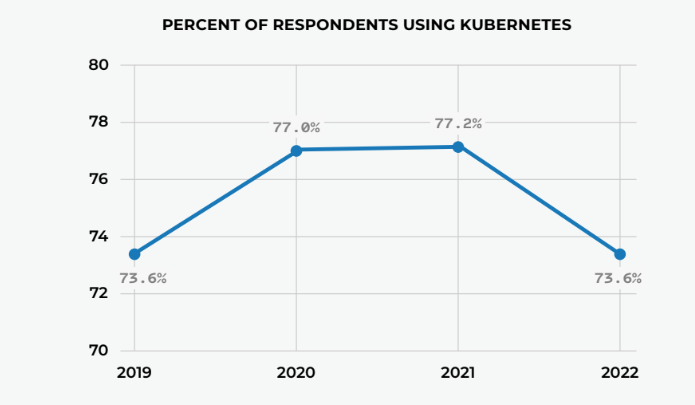
Kubernetes Has Significantly Improved CI/CD and Application Modularity Across Organizations
When identifying the improvements organizations are experiencing from using Kubernetes, a few specific trends jumped out. Although continuous integration/ continuous delivery (CI/CD) is among the most sought after benefits in deploying Kubernetes clusters, that trend increased significantly this year to 73.8%, up from 61.1% in 2021. As the report suggests, this uptick might be a sign of growing competence and confidence with Kubernetes.
There also was a big jump in application modularity in the past year, increasing from 34.3% to 51.1%. Modularizing applications enables developers to build and complete application development at a faster rate. As this approach becomes more widely implemented, it’s possible that Kubernetes' tooling and experience has evolved to support it.
Otherwise, the findings show stabilization and mild decline in adoption rates. Respondents noted slight decreases in “deployment in general,” “building microservices,” and “architectural refactoring.” Last year’s jump in improvements gleaned from Kubernetes security – from 24.9% to 31.3% — held firm this year.
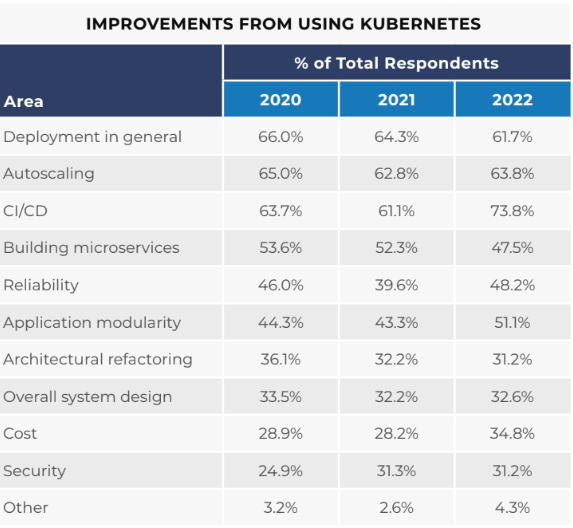
Stateful Workloads Show Gains
Kubernetes has continued to show a steady incline in the popularity of maintaining state while running stateful workloads, rising from 39.5% to 52.1% in the last year. In addition, respondents said they were happy with the way Kubernetes was handling stateful workloads.
When it comes to maintaining state within a Kubernetes cluster, 64% of respondents use StatefulSet, followed by 22% who use DaemonSet. When the data was broken by smaller and larger companies, smaller companies were more likely to rely on StatefulSets vs. DaemonSets, which could be attributed to the monitoring and logging functions of big projects, explains the report.
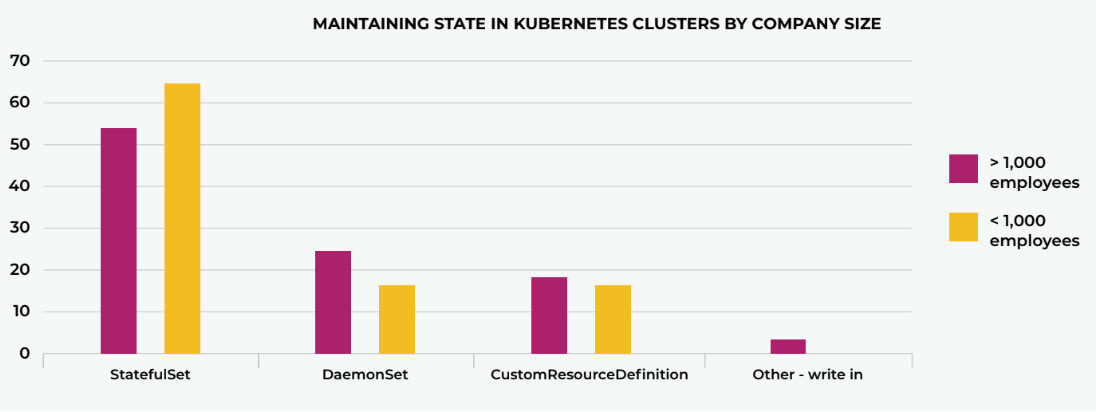
Web Apps and CPUs are the Most Popular Workloads
Web applications and CPU-intensive workloads share the top spot in terms of workloads running on Kubernetes. In a change from last year’s report, DZone broke out non-web general computing into its own category for 2022. Based on this year’s findings, it’s safe to conclude that web applications are the primary use case for Kubernetes.
Conversely, GPU-intensive workloads were least likely to run on Kubernetes. While Kubernetes’ ability to schedule GPUs is still in beta, DZone saw a year-over-year increase from 15.4% in 2021 to 17.2% in 2022. It will be interesting to see how this result changes over time.

Kubernetes Is a Strong General-Purpose Option for Orchestration
Kubernetes was built with the scalability needs of containerized applications in mind. The ability to handle highly variable traffic without overcommitting resources is one of its benefits that only gets better as traffic grows.
DZone reported that more respondents (50%) run a mix of traffic patterns on Kubernetes workloads, including predictable/frequent, predictable/infrequent, unpredictable/low variance, and unpredictable/high variance. The high level of “Mix” responses suggest that most organizations view Kubernetes as a strong general-purpose distributed workloads orchestrator.
Coming in a close second, 45% of respondents run predictable/frequent traffic patterns on Kubernetes workloads. It’s clear that lightweight services (signified by the short, known idle periods between work) are still considered desirable when working with Kubernetes, which is an observation consistent with the findings of previous years.
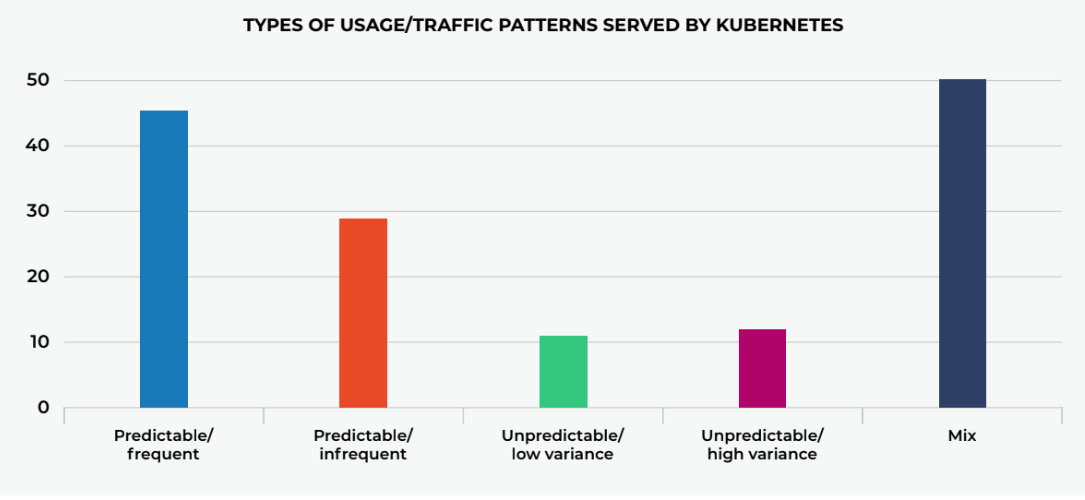
Horizontal Is the Most Common Mode of Autoscaling
When it comes to autoscaling, the most common mode by far was found to be horizontal. Horizontal autoscaling increased its enormous lead over last year, moving up from 65% to 75%. Because horizontal autoscaling is generally more opinionated (least requiring accurate guessing during cluster configuration), this may suggest that Kubernetes is being used to pluck relatively low-hanging fruit when it comes to cluster management.
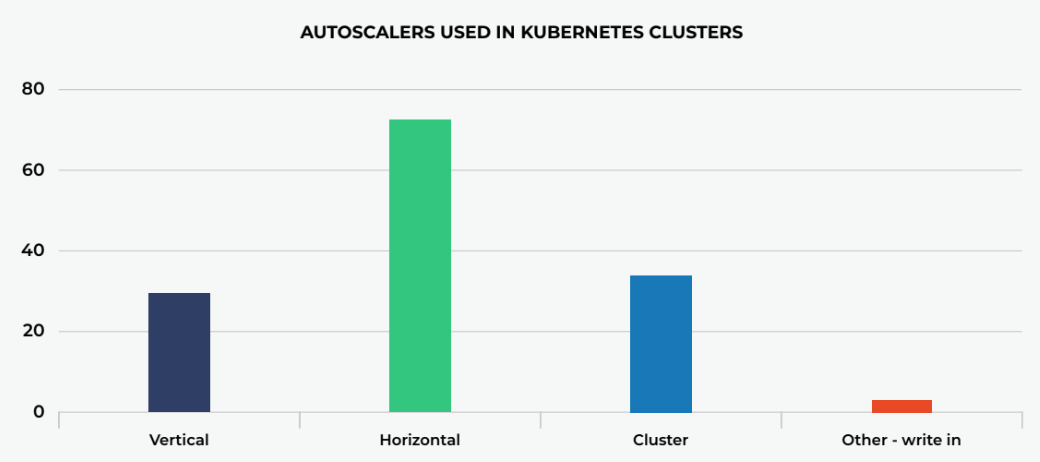
Figure 8
You can read the full “DZone Kubernetes in the Enterprise Report 2022” here.
To learn how the D2iQ Kubernetes Platform (DKP) can give you a friction-free and fail-proof path to modernization, contact the experts at D2iQ.








